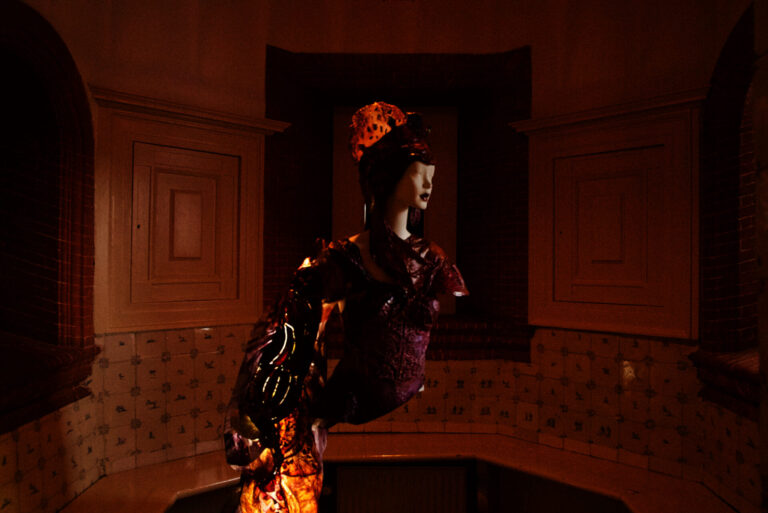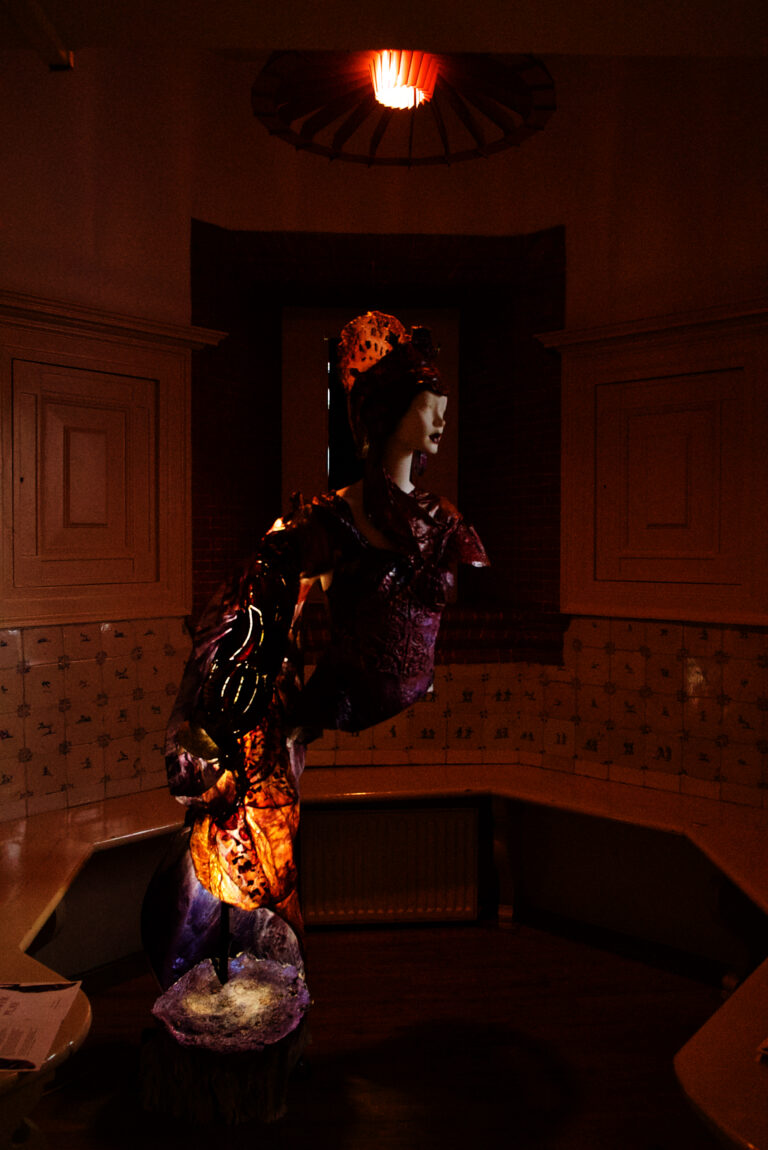In today’s evolving society, where the nuances of femininity continually challenge historical norms, studying Empress Theodora’s life and achievements offers profound insights into the roots of gender equality reforms. “Purple Power Play” merges biomaterials and biopolitics to explore Theodora’s impactful legacy and the profound symbolism of the colour purple. Her costume, inspired by the Ravenna mosaic (547 AD) and crafted from organic waste, mycelium, and kombucha, embodies themes of decay and regeneration, mirroring Theodora’s ascent from obscurity to prominence in the Byzantine Empire.
Purple, historically a symbol of imperial authority, was tied to the ruling class. Sumptuary laws controlled the use of purple garments, reinforcing social hierarchies through visible markers. The installation features Byzantine jewellery made from discarded materials, underscoring the value found in the overlooked. This display connects past and present, prompting reflections on the enduring impact of social reform and the fluid nature of identity and power.
Once marginalised as an actress and courtesan and barred from wearing purple, Empress Theodora used her position to enact sweeping reforms that dramatically shifted women’s roles and rights, influencing modern legal systems and gender equality. Her amendments to sumptuary laws significantly improved women’s societal standing and set a precedent for empowering marginalised groups.
This exhibition invites visitors to reflect on personal transformation and the ongoing potential for resilience and reinvention, celebrating Theodora’s legacy as a catalyst for change.
Final Project BioHAck Academy 2024

